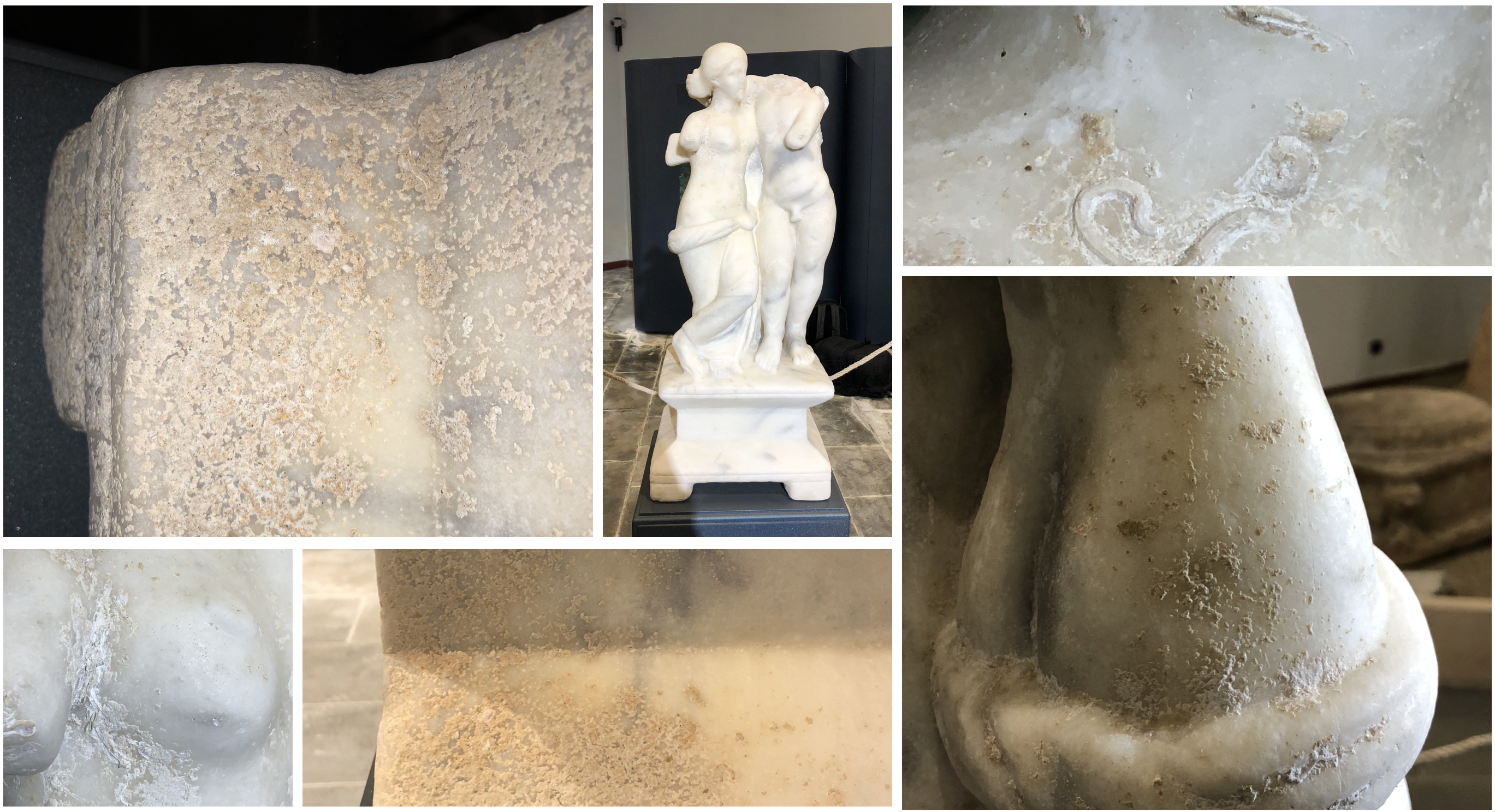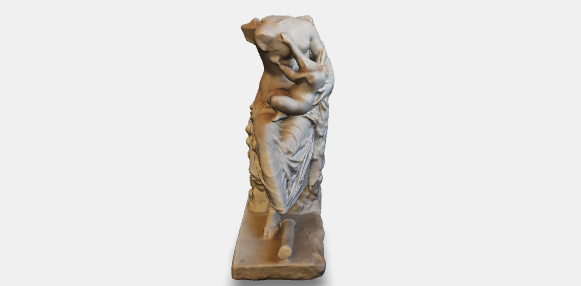Marble sculpture group of Cupid (Eros, Amore) and Psyche. With all probability, it may be attributed to the shipwreck of Punta Scifo A. It was found at sea in 1926 by local fishermen, close to Punta Scifo’s beach.
Cupid has no head nor forearm; Psyche has the right arm missing; what is left of the wings are only the junctions with the shoulders. The two figures rest on a rectangular base, made from the same unfinished marble block. Both figures were not finished either, perhaps to avoid breakage during transport.
It is a representation known since the Hellenistic age (1). Many copies were made in the Roman times and the most famous one is kept at the Capitoline Museums in Rome.
The statue presents traces of biological colonisation, limited to some parts (base, chest and Psyche’s drapery). Encrusting red algal thalli and calcareous tubes made by sea worms (Polychaeta serpulidae) can be observed. In some parts of the base, the marble shows tiny holes (pitting) that may suggest an endolithic (perforating) attack by autotrophic and heterotrophic micro-organisms.
Pensabene 1978, pp. 233-234; Medaglia 2010, p. 292, note 1321 with references; Corrado 2016, passim.
1 EAA (Enciclopedia Universale dell’Arte), I, 1958: Amore e Psiche, p. 322

Corrado M. 2016, Appunti di archeologia subacquea sulla costa ionica calabrese tra Crotone e Le Castella, in Academia.edu
EAA (Enciclopedia Universale dell’Arte), I, 1958: Amore e Psiche, p. 322.
Medaglia S. 2010, Carta archeologica della provincia di Crotone: paesaggi storici e insediamenti nella Calabria centro-orientale dalla Preistoria all’Altomedioevo, Ricerche IV. Collana del Dipartimento di Archeologia e Storia delle Arti, Università della Calabria, Rossano.
Pensabene P. 1978, Supplement to “A cargo of marble shipwrecked at Punta Scifo near Crotone (Italy)”, IJNA 7.3, pp. 233-234.



